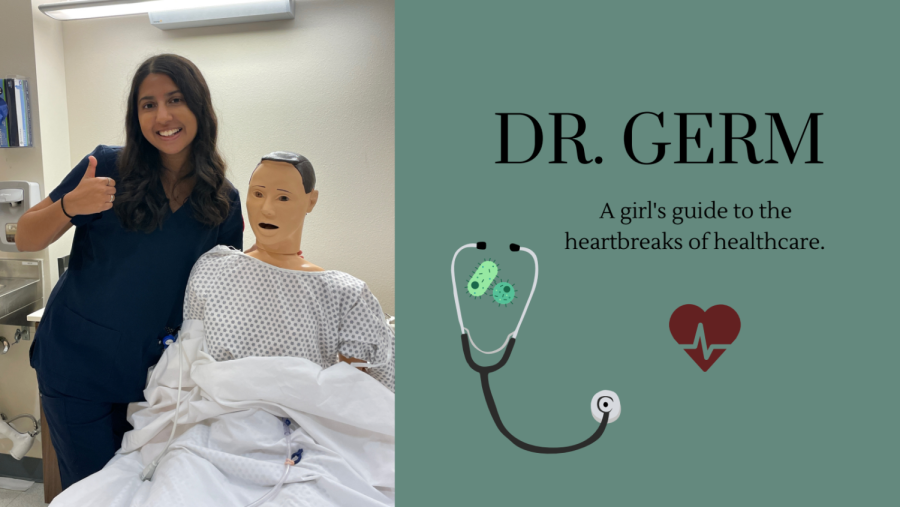In this weekly blog, staff reporter Shannon Christian writes about the myths of healthcare and how it impacts students.
Dr. Germ: mistakes make for malpractice
“Going to the doctor made me feel worse.”
Usually, when one visits their primary care physician or goes to the hospital with any ailment or injury, they expect to return home feeling healed, or at least better than they did before. Unfortunately, this isn’t always the case, as in any environment, mistakes are bound to happen at some point.
Mistakes within the medical field, known as malpractice, hold immense weight, however, as they deal with patients’ lives and wellbeing. Simple mistakes can lead to one’s lifetime of pain or even mortality. To supplement the immense detriment that malpractice mistakes can cause for patients, charges can be made against the physician and hospital in which the malpractice occurred, opening up a case in court of law. In many cases, there is tangible evidence of some mistake occurring, such as an injury received as a result of a procedure, or evidence of negligence, such as ignoring signs and symptoms of a condition that resulted in a fatality.
Infamous cases of malpractice in the medical world contain horror stories such as surgeons amputating the incorrect leg on a patient, or even going so far as to operate on the wrong patient entirely. One case includes a man who had an operation to remove a cancerous tumor within his body, and, after the procedure, found out that the surgical team had left a 13-inch malleable retractor in his abdominal cavity. These cases are extremely severe and were rare cases of magnanimous mistakes.
Many of the 20,000 malpractice cases per year in the US surround a failure of communication, or a failure to diagnose, leading to a detriment in the condition of the patient, or even death.
For physicians, there will always be a chance that malpractice will ensue during their career, in which case, upon receiving their doctorate degrees, physicians will begin paying malpractice insurance. Paying for malpractice insurance can range from $100,000 to $1,000,000 for physicians, depending on their policy, as this is used to cover damages for the case.
Malpractice can be an intimidating aspect of the medical field, but it should not be a deterrent for patients to receive care in a hospital or medical facility. Malpractice isn’t non-existent, but due to advancements in technology, and hospital policies, especially following great precedent incidents of malpractice, there are safeguards in place to protect both patients and care teams. This can include counting systems to account for surgical tools, or even patient advocates to ensure that one leaves the doctor feeling better, not worse than they did before.
Dr. Germ: mistakes make for malpractice
In this weekly blog, staff reporter Shannon Christian writes about the myths of healthcare and how it impacts students.
“Going to the doctor made me feel worse.”
Usually, when one visits their primary care physician or goes to the hospital with any ailment or injury, they expect to return home feeling healed, or at least better than they did before. Unfortunately, this isn’t always the case, as in any environment, mistakes are bound to happen at some point.
Mistakes within the medical field, known as malpractice, hold immense weight, however, as they deal with patients’ lives and wellbeing. Simple mistakes can lead to one’s lifetime of pain or even mortality. To supplement the immense detriment that malpractice mistakes can cause for patients, charges can be made against the physician and hospital in which the malpractice occurred, opening up a case in court of law. In many cases, there is tangible evidence of some mistake occurring, such as an injury received as a result of a procedure, or evidence of negligence, such as ignoring signs and symptoms of a condition that resulted in a fatality.
Infamous cases of malpractice in the medical world contain horror stories such as surgeons amputating the incorrect leg on a patient, or even going so far as to operate on the wrong patient entirely. One case includes a man who had an operation to remove a cancerous tumor within his body, and, after the procedure, found out that the surgical team had left a 13-inch malleable retractor in his abdominal cavity. These cases are extremely severe and were rare cases of magnanimous mistakes.
Many of the 20,000 malpractice cases per year in the US surround a failure of communication, or a failure to diagnose, leading to a detriment in the condition of the patient, or even death.
For physicians, there will always be a chance that malpractice will ensue during their career, in which case, upon receiving their doctorate degrees, physicians will begin paying malpractice insurance. Paying for malpractice insurance can range from $100,000 to $1,000,000 for physicians, depending on their policy, as this is used to cover damages for the case.
Malpractice can be an intimidating aspect of the medical field, but it should not be a deterrent for patients to receive care in a hospital or medical facility. Malpractice isn’t non-existent, but due to advancements in technology, and hospital policies, especially following great precedent incidents of malpractice, there are safeguards in place to protect both patients and care teams. This can include counting systems to account for surgical tools, or even patient advocates to ensure that one leaves the doctor feeling better, not worse than they did before.

